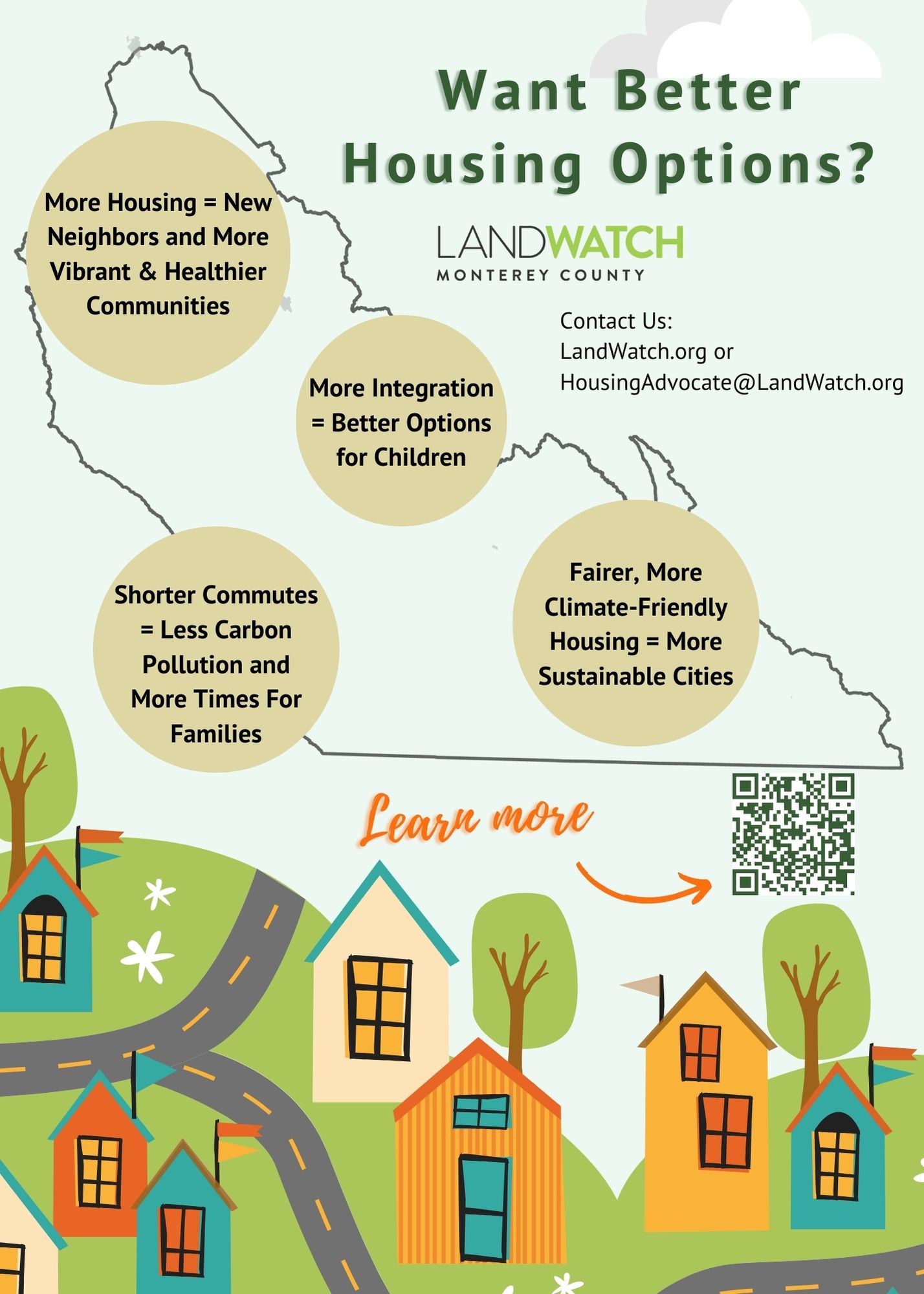Why The Next Six Months Matter for the Future of Housing In Monterey County
Monterey County and its 12 Cities Are Making Important Housing Decisions
The Monterey County region is presently evaluating the types of housing, places it could be built, and how much housing could be constructed throughout a jurisdiction. Through a process called the Regional Housing Needs Assessment (RHNA, pronounced ree-nah), each city and the county are allocated a specific number of housing units to plan for. The RHNA process quantifies existing and future housing needs and occurs every eight years. Each allocation includes four different income levels (very low, low, moderate, and above average) to ensure a broad spectrum of housing affordability options are incorporated.
Policy Issues & Actions
What is at Stake?
The RHNA process has significant effects and impacts on people in Monterey County. It addresses housing shortage and provides hope for affordable homes. The process emphasizes fair housing distribution, promoting socioeconomic diversity and equity. It prevents concentrated poverty and fosters inclusive communities. By addressing housing shortage and promoting transit-oriented development, the process also aids in reducing carbon emissions, combating climate change.
State funding programs for transportation, infrastructure, and housing commonly require or take into account a local jurisdiction’s adherence to the Housing Element Law. Complying with this law enables jurisdictions to access competitive funds that can be utilized for various purposes such as repairing roads, expanding bike lanes, enhancing public transportation, creating parks, or addressing the critical need for affordable housing in communities. In certain instances, funding from state or federal housing programs is contingent upon the jurisdiction having a Housing Element that meets the compliance requirements.
How Can You Participate?
Now that the allocations for each city and the County have been assigned by the Monterey Bay Area Association of Governments, the process of planning for housing begins! Every jurisdiction will undergo an evaluation of policies, ordinances, zoning, and determine potential sites (often called opportunity sites) to include in the Housing Element Update. Through a very public process, the community, and organizations like LandWatch, are able to provide feedback at several stages of draft plans, public meetings, and more. This is our chance to make a difference!
The Process
The next 6-9 months are a critical time period, setting the course for fair, climate-friendly housing in Monterey County for the next eight years and beyond. Together we have a chance to make a major positive impact on human and environmental health. Please sign up for our newsletter and we’ll reach out when it’s time to help amplify our voices for fair and sustainable housing.
A Short History of California Housing Laws
Since the passage of statewide zoning law in 1917, the state has recognized the importance of planning for the future. Since 1969, California has required that all local governments (cities and counties) adequately plan to meet the housing needs of everyone in the community. General Plans are the constitution for community planning and include what, where, and how much of something goes in the jurisdiction. There are several required General Plan elements that each local government in California is required to prepare, one of them being the Housing Element. Since 1969, California has required that all local governments (cities and counties) adequately plan to meet the housing needs of everyone in the community. The Housing Element outlines the jurisdiction’s strategies and plans to address its housing needs, including affordable housing.
The Regional Housing Needs Allocation (RHNA) process is a vital component of the Housing Element update. It involves the allocation of housing units that each jurisdiction within a region must accommodate to meet the demand for affordable housing. The RHNA process refers to the first two steps (Determination and Allocation) of a multi-step process that California governments utilize to plan for housing needs in each region of the state.
The RHNA process begins with identifying population and housing growth projections for the region. These projections determine the number of housing units needed at different income levels. Based on these calculations, housing goals are set for each jurisdiction, considering factors such as job distribution, transportation infrastructure, and social equity. Local governments then create housing plans outlining strategies to meet these targets, including zoning changes, developer incentives, and preserving affordable housing.

